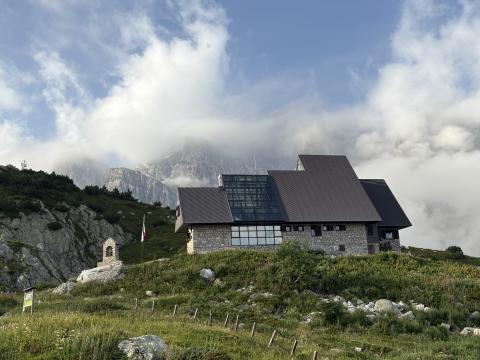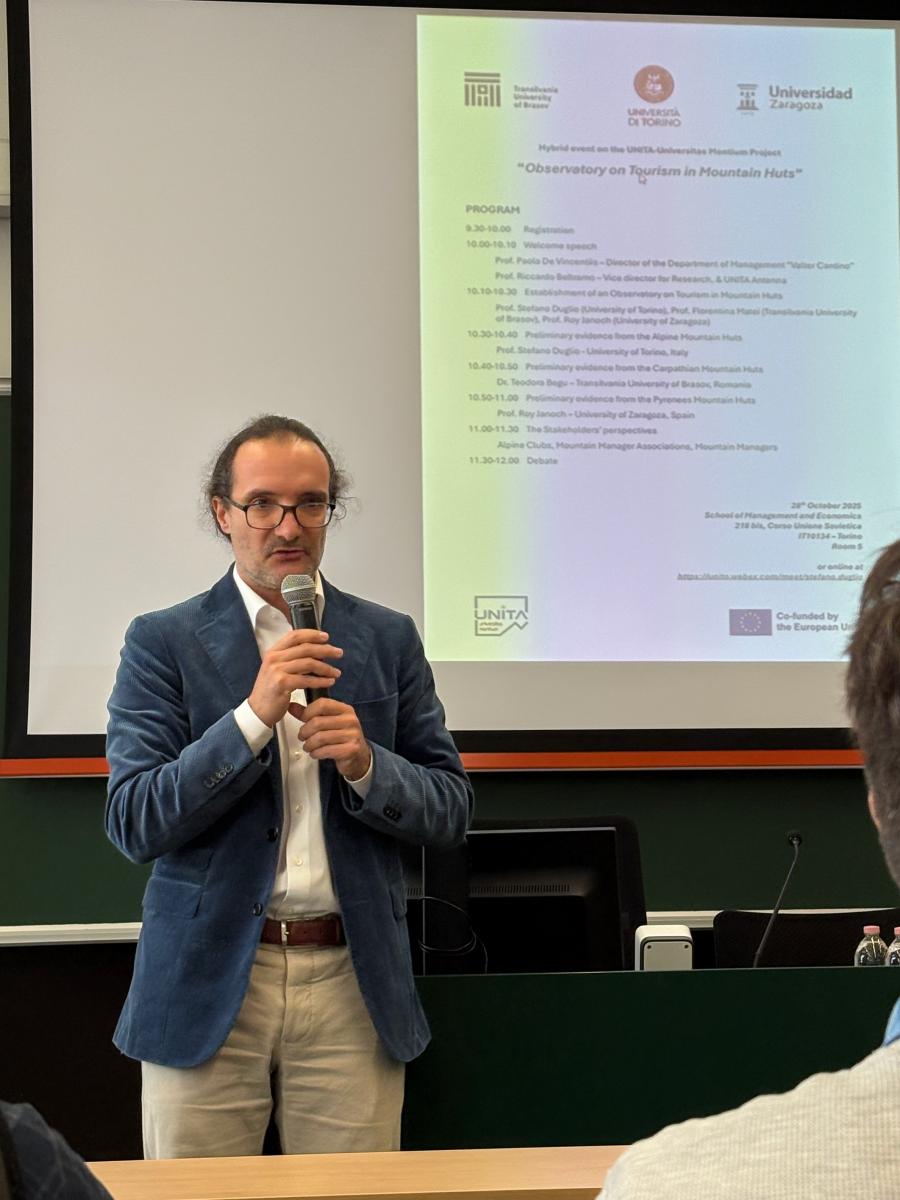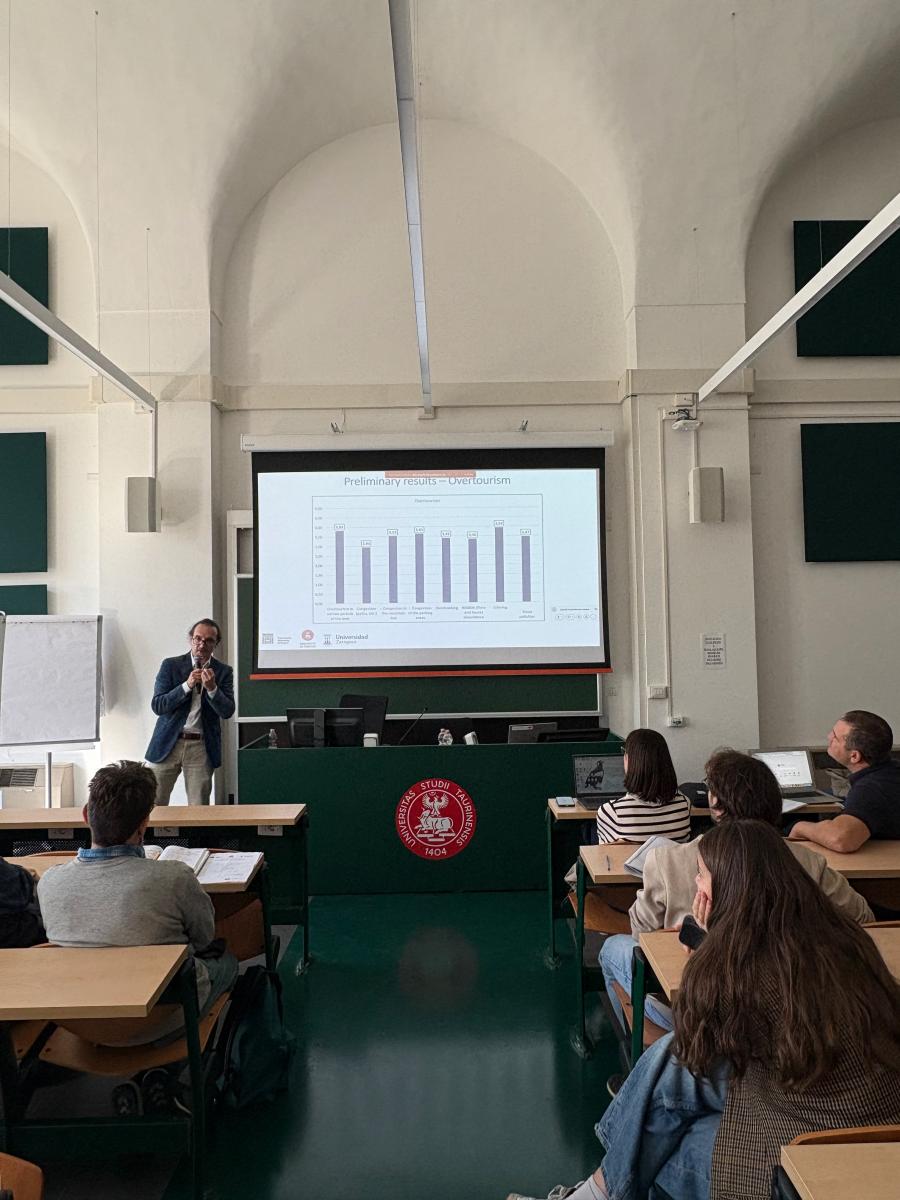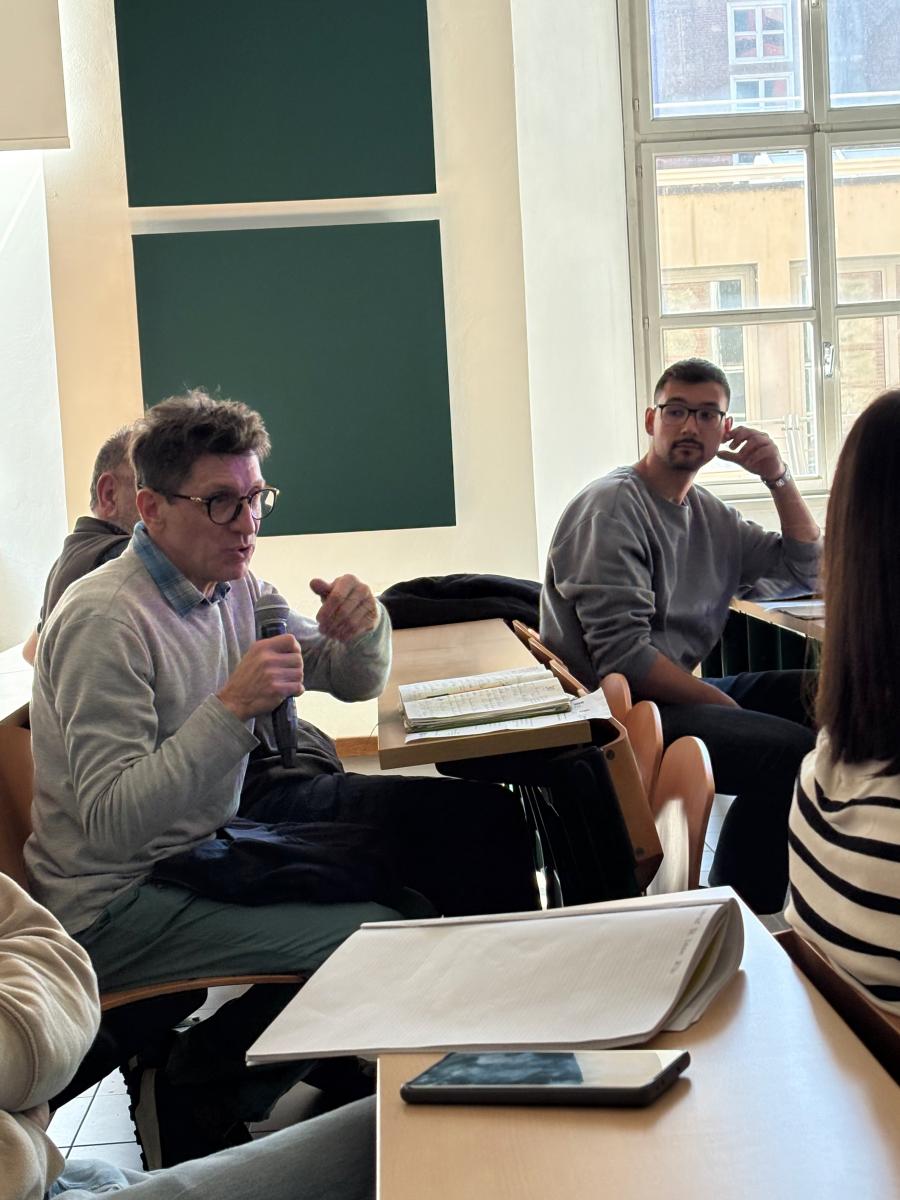An Observatory on Tourism in Mountain Huts: Universities of Torino, Zaragoza and Brașov join forces
Submitted by rbeltram on Wed, 29/10/2025 - 17:49
On 28 October 2025, academics, practitioners and alpine stakeholders met at the School of Management and Economics of the University of Torino (Corso Unione Sovietica 218 bis, Room 5) for a hybrid event dedicated to the launch of the “Observatory on Tourism in Mountain Huts,” an international research initiative supported by the UNITA – Universitas Montium alliance.
The meeting — which took place both in person and via Webex — brought together researchers from Italy, Spain and Romania, along with representatives of Alpine Clubs and mountain managers, to discuss how tourism in high-altitude refuges can be monitored, understood, and governed in a sustainable way.
A long-term vision made concrete
Prof. Paola De Vincentiis, Director of the Department of Management “Valter Cantino”, welcomed participants and highlighted the strategic value of the project for the University of Torino. She stressed that the Observatory is not only an academic exercise, but a platform that connects universities, territories and operators who manage mountain environments every day.

The Observatory builds on more than twenty-five years of research led by Prof. Riccardo Beltramo (Department of Management, University of Torino), who has been studying sustainable tourism in mountain areas and, in particular, the role of Alpine huts as both shelters and cultural custodians since 1997. His work has consistently focused on how to balance tourism development with environmental and social responsibility in fragile high-altitude ecosystems.
In his opening remarks, Prof. Beltramo — who also serves as Vice Director for Research and UNITA Antenna within the Department — underlined that mountain huts are not just overnight facilities for hikers, but “sentinels of the territory”: places where knowledge, traditions, and local ecological awareness are actively transmitted to visitors.

What the Observatory will actually do
The Observatory on Tourism in Mountain Huts aims to become a permanent reference point for understanding how mountain tourism is evolving in different European regions — the Alps, the Pyrenees, and the Carpathians — and how that evolution affects local economies, environmental protection, and cultural heritage.
The research plan is structured in five main phases:
1. Defining an observation model and collecting baseline data on the characteristics of huts, including their cultural and environmental relevance.
2. Engaging experts and stakeholders (hut wardens, Alpine clubs, local administrations, mountain managers) to identify shared sustainability indicators.
3. Presenting initial evidence and comparing strategies across mountain regions, with an international debate on conservation and responsible tourism.
4. Applying the framework in selected huts, producing practical training and educational material for managers and visitors.
5. Publishing a strategic roadmap to guide long-term policy, communication and governance of mountain tourism.
Why this matters: today, huts are under pressure. Visitor flows are increasing, seasonality is shifting, and expectations are changing — people want comfort, safety, good food, and “authenticity,” all at once. But the physical environment is extremely fragile. Without a shared methodology, decisions tend to be reactive (fix problems when they emerge) instead of proactive (anticipate risks and manage capacity). The Observatory is trying to move from reactive to proactive.

A European partnership
The initiative is led by an international team of researchers:
• Prof. Stefano Duglio, University of Torino, who serves as the project’s Scientific Coordinator. He presented the overall structure of the Observatory and introduced the first set of indicators and methodological tools.
• Prof. Florentina (Radoi) Matei, Transilvania University of Brașov (Romania), whose expertise focuses on biodiversity and on the nutritional and health value of local mountain plants. Her contribution brings an ecological and socio-cultural perspective from the Carpathians.
• Prof. Roy Janoch, University of Zaragoza (Spain), specializing in digitalization and tourism. He outlined how data collection, digital tools, and shared platforms can help standardize monitoring practices across different mountain regions, including the Pyrenees.
This European network — Torino, Brașov, Zaragoza — is not accidental. UNITA – Universitas Montium explicitly encourages collaboration among universities located in mountain regions, and positions mountain territories not as “peripheral,” but as strategic laboratories for innovation, sustainability and resilience.
First evidence from the Alps, the Carpathians, and the Pyrenees
The core of the event was dedicated to early findings from three mountain systems.
• Alpine huts: Prof. Stefano Duglio presented initial evidence from Italian Alpine refuges, focusing on how huts act as educational centers that translate sustainability into daily practice — from waste and water management to visitor awareness.

• Carpathian huts: Dr. Teodora Begu (Transilvania University of Brașov) shared preliminary results from the Carpathians, offering a comparative view of mountain hospitality models in Eastern Europe, where issues such as biodiversity protection and traditional use of local plants are tightly interwoven with tourism.

• Pyrenean huts: Prof. Roy Janoch (University of Zaragoza) presented insights from the Pyrenees, highlighting how digital tools can help operators understand visitor flows and better plan services throughout the season.
This comparative moment was important because it challenged an implicit assumption that “all mountain huts are the same.” They are not. In different regions, huts play different roles: emergency infrastructure, cultural mediation, biodiversity protection, economic anchor for local communities. Having a shared Observatory forces everyone to look beyond their own mountains.

Listening to the stakeholders
After the scientific presentations, the discussion opened to Alpine Clubs, mountain managers and professional associations. Their intervention made one point very clear: good intentions are not enough. Hut wardens and territorial managers face real operational constraints — staffing, logistics, safety, energy supply at altitude — and they need tools they can actually use, not academic rhetoric.
This is where the Observatory will be tested. If it becomes a practical instrument that helps mountain actors make decisions (for example: how many guests can safely be hosted in a fragile area during peak season?), then it will have real impact. If it stays purely descriptive, it will not.

Next steps
The project team will now refine the shared framework, apply it within a first set of selected huts in the Alps, the Carpathians and the Pyrenees, and produce educational materials for both hut managers and visitors — with the goal of shaping behavior before environmental damage occurs.
In parallel, a strategic document will be drafted to guide future policy and communication, aiming to position mountain huts not just as accommodation, but as active guardians of cultural identity and environmental integrity in high-altitude territories.
Why this initiative matters
Two things emerged clearly from yesterday’s discussion:
1. Mountain huts are governance actors. They are part of how the territory is managed — culturally, environmentally, economically. Treating them as “just tourism infrastructure” is outdated.
2. Without shared data, there is no shared policy. Alpine, Pyrenean and Carpathian regions face similar pressures, but often talk past each other. A common Observatory, if maintained, creates a common language.
In other words: this is not only about promoting “sustainable tourism,” which is a phrase that risks sounding cosmetic. It is about giving mountain communities the evidence they need to defend themselves — intelligently and proactively — in the face of climate stress, mass tourism and cultural homogenization.
And that, ultimately, is the real ambition behind the Observatory on Tourism in Mountain Huts.
Photo credits
All photographs in this article were taken by Prof. Riccardo Beltramo during the event on 28 October 2025 at the School of Management and Economics, University of Torino.
